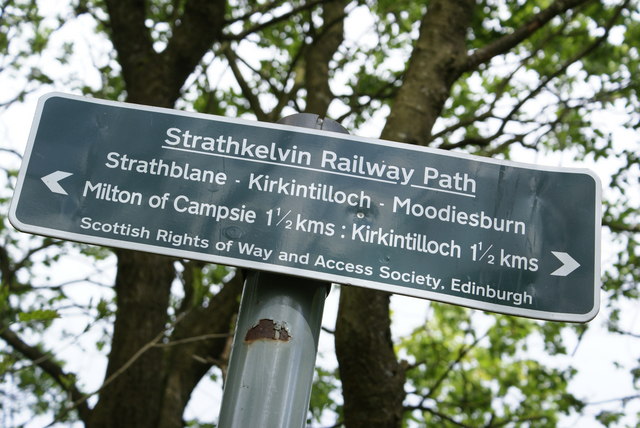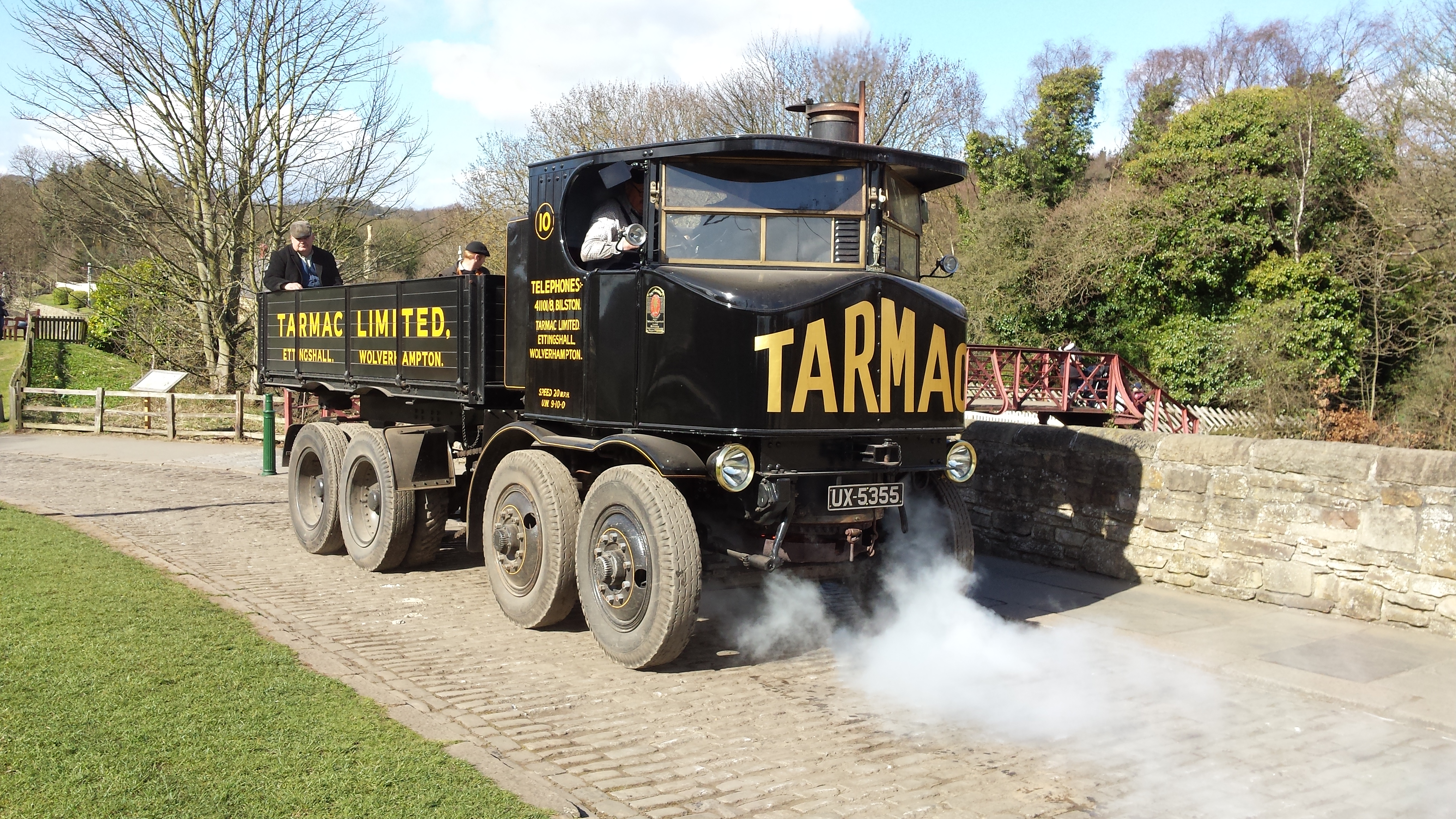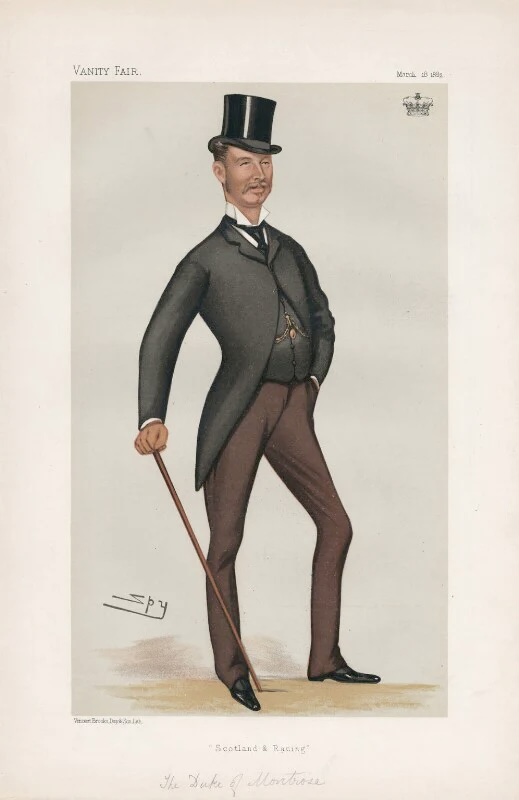|
Campsie Branch
The Glasgow to Aberfoyle Line was a railway line in Scotland, built in stages, leaving the Edinburgh and Glasgow Railway near Lenzie. Tourist traffic was a dominant part of the motivation for building the line, and road tours to the Trossachs from Aberfoyle formed a significant part of the traffic. The first section to open was the Campsie branch of the Edinburgh and Glasgow Railway, to Lennoxtown, in 1848; this became known as the picnic line, and was much used for the purpose by city dwellers. This was followed by the independent Blane Valley Railway in 1866, which reached Killearn. Finally the Strathendrick and Aberfoyle Railway constructed the northernmost section, which opened in 1882. Running through sparsely populated terrain, the line never made money although the tourist traffic was useful. When road transport became practicable from the 1920s, the decline of the line was inevitable. Cost reduction measures achieved little and in 1951 the passenger service was withdrawn ... [...More Info...] [...Related Items...] OR: [Wikipedia] [Google] [Baidu] |
Edinburgh And Glasgow Railway
The Edinburgh and Glasgow Railway was authorised by Act of Parliament on 4 July 1838. It was opened to passenger traffic on 21 February 1842, between its Glasgow Queen Street railway station (sometimes referred to at first as Dundas Street) and Haymarket railway station in Edinburgh. Construction cost £1,200,000 for 46 miles (74 km). The intermediate stations were at Corstorphine (later Saughton), Gogar, Ratho, Winchburgh, Linlithgow, Polmont, Falkirk, Castlecary, Croy, North Lanarkshire, Croy, Kirkintilloch (later Lenzie) and Bishopbriggs. There was a ticket platform at Cowlairs. The line was extended eastwards from Haymarket to North Bridge, Edinburgh, North Bridge in 1846, and a joint station for connection with the North British Railway was opened on what is now Edinburgh Waverley railway station in 1847. The quantity of passenger business on the line considerably exceeded estimates, reaching almost double the daily volume, and by 1850 company needed 58 locomotives ... [...More Info...] [...Related Items...] OR: [Wikipedia] [Google] [Baidu] |
Aberfoyle Line 1882
Aberfoyle may refer to: *Aberfoyle, County Londonderry, Northern Ireland * Aberfoyle, Stirling, Scotland * Aberfoyle, Ontario, Canada * Aberfoyle, Texas, United States *Aberfoyle, Warwick Aberfoyle is a heritage-listed detached house at 35 Wood Street, Warwick, Queensland, Warwick, Southern Downs Region, Queensland, Australia. It was designed by architect Hugh Hamilton Campbell and built from 1910 to . It was added to the Queens ..., a heritage house in Queensland, Australia See also * Aberfoil, Alabama {{geodis ... [...More Info...] [...Related Items...] OR: [Wikipedia] [Google] [Baidu] |
Transport In Glasgow
The city of Glasgow, Scotland has a transport system encompassing air, rail, road, and an underground light metro line. Prior to 1962, the city was also served by trams. Commuters travelling into Glasgow from the neighbouring local authorities of North and South Lanarkshire, Renfrewshire, East Renfrewshire, and East and West Dunbartonshire have a major influence on travel patterns, with tens of thousands of residents commuting into the city each day. The most popular mode of transport in the city is the car, used by two thirds of people for journeys around the city. Most streets in the centre of Glasgow are organised in a grid-iron pattern laid out in the early 19th century, with streets running north to south and east to west. Transport authorities Glasgow's transport network is administered by a number of authorities. Transport Scotland is responsible for the construction, expansion and maintenance of trunk roads and motorways within the city (such as the M8, M73, M74 and ... [...More Info...] [...Related Items...] OR: [Wikipedia] [Google] [Baidu] |
Closed Railway Lines In Scotland
Closed may refer to: Mathematics * Closure (mathematics), a set, along with operations, for which applying those operations on members always results in a member of the set * Closed set, a set which contains all its limit points * Closed interval, an interval which includes its endpoints * Closed line segment, a line segment which includes its endpoints * Closed manifold, a compact manifold which has no boundary Other uses * Closed (poker), a betting round where no player will have the right to raise * ''Closed'' (album), a 2010 album by Bomb Factory * Closed GmbH, a German fashion brand * Closed class, in linguistics, a class of words or other entities which rarely changes See also * * Close (other) * Closed loop (other) * Closing (other) * Closure (other) * Open (other) Open or OPEN may refer to: Music * Open (band), Australian pop/rock band * The Open (band), English indie rock band * ''Open'' (Blues Image album), 1969 * ''O ... [...More Info...] [...Related Items...] OR: [Wikipedia] [Google] [Baidu] |
Strathkelvin Railway Path
Strathkelvin Railway Path is rail trail following the route of several dismantled railway lines extending from Gartcosh to Strathblane. It goes for 10 km from one end to another History The northern section follows the route of the Campsie Branch of the Edinburgh and Glasgow Railway which was extended as the Blane Valley Railway line and closed in 1951 (although some parts of the line were still used for freight into the '60s). The southern section follows a branch of the Monkland and Kirkintilloch Railway. Starting in Kirkintilloch it runs south and currently terminates at the northern tip of Gartcosh; just before the original railway junction would have split east to Bedlay Colliery and south to Glenboig. Future Plans It has been announced by Sustrans that the path will become part of the National Cycle Network and called route 755. In the future it is planned that the path will be extended to the north further following the route of the dismantled railway to incorporate part ... [...More Info...] [...Related Items...] OR: [Wikipedia] [Google] [Baidu] |
Railmotor
Railmotor is a term used in the United Kingdom and elsewhere for a railway lightweight railcar, usually consisting of a railway carriage with a steam traction unit, or a diesel or petrol engine, integrated into it. Steam railcars Overview In the earliest days of railways, designers wished to produce a vehicle for passenger carrying that was economical to build and operate on routes where passenger numbers were light. A single coach with its own prime mover was a solution adopted in some cases; this may be thought of as the predecessor to the railcar, a term more associated with the use of internal combustion engines. William Bridges Adams started building railmotors in small numbers as early as 1848. The Bristol and Exeter Railway used a steam carriage. In most cases the early designs were unsuccessful technically, but in the early years of the twentieth century, street-running passenger tramways started to use small steam engines to draw tramcars, replacing the customary hors ... [...More Info...] [...Related Items...] OR: [Wikipedia] [Google] [Baidu] |
Sentinel Waggon Works
Sentinel Waggon Works Ltd was a British company based in Shrewsbury, Shropshire that made steam-powered lorries (steam wagons), railway locomotives, and later, diesel engined lorries, buses and locomotives. History Alley & MacLellan, Sentinel Works, Jessie Street Glasgow Alley & MacLellan was founded in 1875 and was based in Polmadie, Glasgow. This company continued in operation until the 1950s. Initially manufacturing valves and compressors for steam engines, and later whole steamships, Alley & MacLellan acquired Simpson and Bibby of Horsehay, Shropshire, manufacturer of steam-powered road vehicles, in 1903. They began producing steam road vehicles in 1905 and in 1906 introduced a five-ton vertical-boiler steam wagon, which featured a two-cylinder undertype engine and chain drive. Around 1915, Alley & McLellan moved the steam wagon production to a new factory to Shrewsbury and it continued under a separate company (see below), and in 1918 the company also opened a th ... [...More Info...] [...Related Items...] OR: [Wikipedia] [Google] [Baidu] |
Charabanc
A charabanc or "char-à-banc" (often pronounced "sharra-bang" in colloquial British English) is a type of horse-drawn vehicle or early motor coach, usually open-topped, common in Britain during the early part of the 20th century. It has "benched seats arranged in rows, looking forward, commonly used for large parties, whether as public conveyances or for excursions". It was especially popular for sight-seeing or " works outings" to the country or the seaside, organised by businesses once a year. The name derives from the French ("carriage with wooden benches"), the vehicle having originated in France in the early 19th century. Although the vehicle has not been common on the roads since the 1920s, a few signs survive from the era; a notable example at Wookey Hole in Somerset warns that the road to the neighbouring village of Easton is unsuitable for charabancs. The word is in common usage especially in Northern England in a jocular way referring to works outings by coach. ... [...More Info...] [...Related Items...] OR: [Wikipedia] [Google] [Baidu] |
Aberfoyle
Aberfoyle may refer to: *Aberfoyle, County Londonderry, Northern Ireland * Aberfoyle, Stirling, Scotland * Aberfoyle, Ontario, Canada * Aberfoyle, Texas, United States *Aberfoyle, Warwick Aberfoyle is a heritage-listed detached house at 35 Wood Street, Warwick, Queensland, Warwick, Southern Downs Region, Queensland, Australia. It was designed by architect Hugh Hamilton Campbell and built from 1910 to . It was added to the Queens ..., a heritage house in Queensland, Australia See also * Aberfoil, Alabama {{geodis ... [...More Info...] [...Related Items...] OR: [Wikipedia] [Google] [Baidu] |
View From Blanefield Station
A view is a sight or prospect or the ability to see or be seen from a particular place. View, views or Views may also refer to: Common meanings * View (Buddhism), a charged interpretation of experience which intensely shapes and affects thought, sensation, and action * Graphical projection in a technical drawing or schematic ** Multiview orthographic projection, standardizing 2D images to represent a 3D object * Opinion, a belief about subjective matters * Page view, a visit to a World Wide Web page * Panorama, a wide-angle view * Scenic viewpoint, an elevated location where people can view scenery * World view, the fundamental cognitive orientation of an individual or society encompassing the entirety of the individual or society's knowledge and point-of-view Places * View, Kentucky, an unincorporated community in Crittenden County * View, Texas, an unincorporated community in Taylor County Arts, entertainment, and media Music * ''View'' (album), the 2003 debut album by ... [...More Info...] [...Related Items...] OR: [Wikipedia] [Google] [Baidu] |
Forth And Clyde Junction Railway
The Forth and Clyde Junction Railway was a railway line in Scotland which ran from Stirling to Balloch. It was built with the expectation of conveying coal from the Fife coalfields to a quay at Bowling on the Clyde for onward transport, but that traffic did not materialise. The line opened in 1856; it was a simple rural line running through sparsely populated terrain, and traffic was thin. In 1882 the Strathendrick and Aberfoyle Railway made a connection with the line, using a few miles of it as part of its own route to Aberfoyle. The Forth and Clyde Junction route lost its passenger train service in 1934, but the Aberfoyle trains continued until they too were discontinued in 1951. Goods train continued on parts of the line, but in 1965 the line was completely closed, and none of it remains in railway use. History First proposal In 1845 there was a frenzy of railway promotion in Scotland; the Edinburgh and Glasgow Railway had been opened in 1842 and shown that railways of mo ... [...More Info...] [...Related Items...] OR: [Wikipedia] [Google] [Baidu] |
Douglas Graham, 5th Duke Of Montrose
Douglas Beresford Malise Ronald Graham, 5th Duke of Montrose KT (7 November 1852 – 10 December 1925), initially styled as the Marquess of Graham, was a Scottish nobleman, racehorse owner, soldier and the 5th Duke of Montrose. He was the son and successor of James Graham, 4th Duke of Montrose and Chief of Clan Graham. Early life Douglas Graham was born in 1852, the third and eldest surviving son of the 4th Duke of Montrose and Hon. Caroline Agnes Horsley-Beresford. His mother was a daughter of John Horsley-Beresford, 2nd Lord Decies, a grandson of Marcus Beresford, 1st Earl of Tyrone. He was educated at Eton College and succeeded his father in 1874. Career He joined the Coldstream Guards in 1872, transferred to the 5th Lancers in 1874, and retired in 1878. Later he was Colonel commanding the 3rd Battalion of the Argyll and Sutherland Highlanders. He served in the Second Boer War (medal and two clasps). He was appointed a Knight of the Thistle in 1879 and was Chancellor ... [...More Info...] [...Related Items...] OR: [Wikipedia] [Google] [Baidu] |




.jpg)



